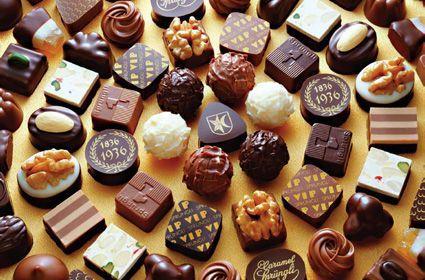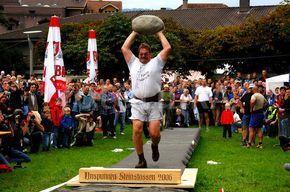
6 minute read
Around the World
Around the World Journey to Switzerland
Life has changed enormously. These days entire nations have been advised to stay at home and travelling is significantly restricted. But this fact doesn’t stop us from travelling the world and discovering countries while reading!
Advertisement

It is February, one of the coldest months of the year. It is winter in the Northern hemisphere. That brings skiing, snowboarding, snowmen and enjoying some nice warm hot chocolate, while being wrapped in a cozy blanket and watching the beauty of falling snowflakes.
Let me take you on a journey to a country with amazing towering mountains that are covered in snow no matter what the season, heaps of crystal-clear lakes, and beautiful, little villages. Let’s go to a country famous for its signature chocolate bar made with honey and almond nougat – Toblerone, great skiing experiences in the Alps, and magical train rides. Let’s go to Switzerland.
Switzerland is a landlocked country (a country that does not have territory connected to an ocean) in central Europe. The north is bordered by Germany, the east by Austria and a bit of Liechtenstein, the south by Italy and the west by France. The official name of Switzerland is Confoederatio Helvetica meaning Swiss Confederation in Latin. This is the reason why Switzerland’s abbreviation is CH. The Swiss Confederation consists of 26 cantons or states.


The flag of Switzerland displays a white cross in the centre of a square red field. And since the flag is perfectly symmetrical, the Swiss flag is the only national flag in the world that cannot be hoisted the wrong way.
An intriguing fact is that there is even a sport discipline dedicated to the Swiss flag called: Fahnenschwingen. This is flag tossing, dating back to medieval times. The discipline requires athletes to master 99 different twists and tosses – both with their right and left hands.
Switzerland is a small and mountainous country. It’s geographical landscape can be divided into three different regions: the Jura mountains (a limestone range that makes up 12% of the surface area of the country), the Plateau (partly flat area that takes 30% of the country’s area and where two-thirds of the country’s population live), and the Alps – the incredibly famous part of Switzerland.

The Swiss Alps are the highest mountains in Europe and 48 of them are over 4000m. The most famous peak is the Matterhorn, which is 4.478 m. tall, but the highest peak is Dufourspitze which stands at 4.634 m and lies in the Monte Rosa massif.

It is interesting to know that only 15% of the Alps actually lie within Switzerland, even though Switzerland is the country that people most associate with the Alps. Although Switzerland is most famous for its Alpine landscape, and there might not be any seas, the country is also home to many stunning lakes.

In fact, Switzerland has more than 1500 lakes with many different shapes and sizes; from massive water bodies that span across the country to tiny ones sitting in charming, small villages. Swiss lakes are described by their strikingly blue water and natural beauty. The largest lake in the country is Lake Geneva, which is shared with France.
Monte Rosa
The Matterhorn – the triangular shaped peak commonly believed to have given Theodor Tobler his inspiration for the shape of Toblerone.


Switzerland is also the home of the longest glacier in Europe. The Aletsch Glacier is about 23km. With an unbelievable 11 billion tons of ice, the Aletsch Glacier is part of the UNESCO World Heritage Site.
The capital city of Switzerland is Bern. However, the largest city is Zurich, (right) which is consistently ranked in the Top 10 Most Livable Cities in the World.



German French Italian Romansh
The most widely spoken language is Swiss German and the smallest national language is Romansh. Most people can understand or speak English, but older people rarely speak English and communicate in the regional language or dialect.
The influence of Germany, France and Italy in the Swiss cuisine is understandable too. Each region developed its own gastronomy according to the difference of climate and languages but generally the traditional Swiss cuisine include a great selection of bread, dairy products, and a wonderful variety of the world-famous Swiss cheese. Well–known Swiss dishes include raclette and fondue (molten cheese eaten with bread or potatoes), rosti (fried grated potatoes), muesli (an oatmeal breakfast dish) and Zurcher Geschnetzeltes (veal and mushrooms on a creamy sauce).
Swiss chocolate is famous across the globe for a good reason – the country has a long history of excellence in this field. Chocolate has been made in Switzerland since the 17th century, but chocolate production became an international phenomenon in Switzerland at the end of the 19th century. The country is not only the largest producer of high- quality chocolate in the world – approximately 180,000 kg per year –Swiss people consume the most chocolate per capita in the world too – about 11 kg per person for a year.



Schwingen Steinstossen Hornussen

Despite the fact that Swiss people rank first in the consumption of chocolate, according to the World Health Organization, Switzerland is the least obese European country; maybe because sports play an important role in the Swiss people’s lives. Most of the people have a regular sport activity and one in four is an active member of a sports club. Because of the large mountain range of the country, skiing, snowboarding, and mountaineering are the most common sports in Switzerland, but football and ice hockey are extremely popular too. Along with the popular sports, Swiss people play some traditional sports too, including Swiss–style wrestling (Schwingen), Hornussen – a kind of Alpine baseball – and Steinstossen – throwing a heavy stone as far as possible.


The customs in Switzerland are diverse as the Swiss themselves. Originating from different cultures and having four different languages makes the festivals they celebrate vivid and spectacular. Swiss festivals range from bright folk spectacles to medieval celebrations and sophisticated art entertainment.


Switzerland – pure, clean, organized, diverse, and picturesque – a real wonder. What are you waiting for? Grab some hot chocolate, and discover this fascinating country.











